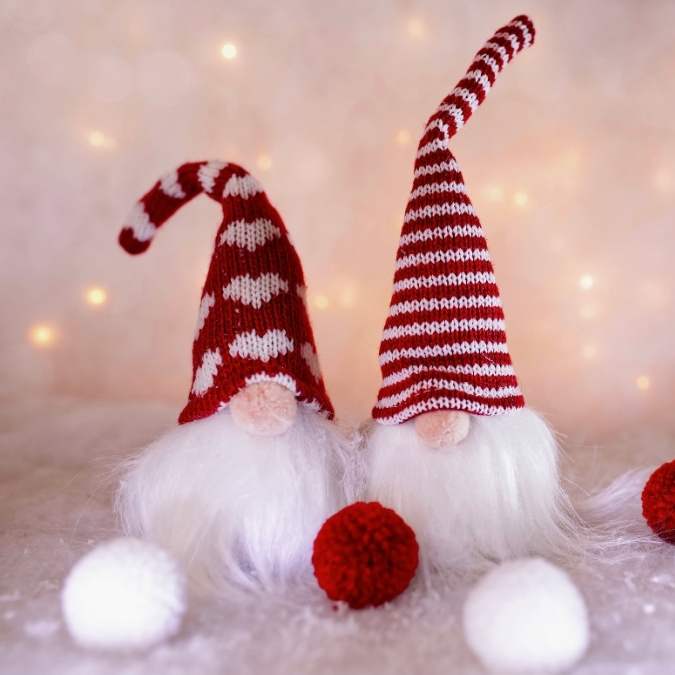
When it comes to celebrating Christmas, many of us picture cozy fireplaces, carols, exchanging presents and decorating fir trees. But around the globe, there are plenty of Christmas customs that are delightfully quirky, charmingly unexpected — and deeply meaningful in their own cultural context. These traditions remind us that Christmas isn’t one fixed thing, but a holiday that adapts to local values, histories, climates and imagination.
In this article you’ll discover some of the most fascinating traditions, why they matter, what they tell us about local identity, and how they enrich our global understanding of the holiday.
Why Unusual Traditions Matter
You might ask: “What’s the value in highlighting weird Christmas customs?” There are several reasons:
- Cultural richness: These traditions offer insight into how communities use the holiday to express local identity, meaning and history.
- Broadening perspective: When we realise that Christmas doesn’t look the same everywhere, we become more open to alternative ways of celebrating—and more inclusive.
- Fresh inspiration: Even if you don’t adopt them fully, learning about these traditions can spark creative ideas for your own holiday rituals.
- Rooted in meaning: Far from being gimmicks, many of the odd customs have deep origins—folk stories, climate, historical adaptation, or local superstition—which makes them worth understanding.
In short: unusual doesn’t mean superficial—it often means meaningful in its own context.
European Oddities: Goats, Log-Pooping, Spiders & Broom-Hiding
The Giant Yule Goat of Sweden
In Sweden, one of the more iconic (and bizarre) festive displays is the Gävle Goat (Julbocken) — a large straw goat erected annually in the town of Gävle. The tradition: every December, the community builds the goat out of straw and ribbon, placing it in a central square. Since 1966 many of these goats have been sabotaged by arson for fun.
Why it matters: The goat symbol has pagan roots (yule goat, harvest traditions) and over time became part of Swedish Christmas culture. The fact it’s so vulnerable to being burned adds a layer of mischievous community participation. While odd, it signals the way traditions transform over time.
Caga Tió: The “Pooping Log” of Catalonia
In Catalonia (Spain) there’s a winter tradition quite unlike any other: the Caga Tió, or “pooping log.” Families bring a log into the home, feed it in the days before Christmas (nuts, sweets), cover it with a blanket. On Christmas Eve children beat the log with sticks while singing songs and then gifts “emerge” from the log—hence the nickname.
Why it matters: Instead of Santa or Father Christmas, the family ritual involves a log that “gives” presents. It’s playful, community-oriented and rooted in folk tradition. It challenges assumptions about what gift-giving should look like.
Spiders in the Christmas Tree: Ukraine & Eastern Europe
In parts of Ukraine, Germany, Poland and other eastern countries, there is the charming belief of the Legend of the Christmas Spider. The story: a poor widow could not afford decorations, yet her tree was coated overnight with glittering cobwebs in the morning sunlight — which was taken as a sign of luck. From that came the tradition of decorating trees with artificial spider webs, spider ornaments or even finding a real spider web is considered good luck.
Why it matters: This shows how symbols of luck, poverty, hope and transformation are internalised in a festive custom. It’s unexpected—and beautiful in its subversion of “usual” tree décor.
Hide Your Broom: Norway and Witches on Christmas Eve
In Norway on Christmas Eve it is considered bad luck to leave brooms or mops unattended — the tradition holds that witches or evil spirits come out and may steal them for a joy-ride in the night sky. Families therefore hide their cleaning tools before the night.
Why it matters: It points to the intersection of festive joy and old superstitions. While the rest of the world may focus on lights and gifts, here the tradition is about protection, returning spirits and domestic ritual. It reminds us that holidays also intersect with folklore and belief.
East Asia & Beyond: KFC Dinners, Mango Trees & More
Christmas Chicken in Japan
One of the most surprising traditions is how families in Japan often choose to eat a bucket of fried chicken (from the fast-food chain KFC) on Christmas Eve. The origin: a successful marketing campaign in the 1970s (“Kentucky for Christmas!”) launched by KFC Japan. Over time this became a popular festive meal, requiring pre-orders weeks in advance.
Why it matters: This is a clear example of how commercial intervention can create tradition. It shows that traditions aren’t always ancient—they may be newly minted, yet deeply embedded. And it highlights global holiday adaptation: even where Christmas isn’t a major religious holiday, local practices emerge.
Mango & Banana Trees in India
In India, among the ~25 million Christians, traditional pine fir trees are rare due to climate. Instead families often decorate banana trees or mango trees. In some parts, clay oil-lamps are lit on rooftops in lieu of snow, and decorations take on tropical form. (Reported in travel surveys.)
Why it matters: It emphasises how climate and local ecology shape how holidays are celebrated. A fir tree in a tropical region may be impractical; adapting makes the ritual sustainable and meaningful. It also expands our idea of what a “Christmas tree” can be.
Latin America, Oceania & Other Creative Festive Spins
Roller-skating to Church in Venezuela
In Caracas, Venezuela, a vibrant and playful tradition happens: on Christmas Eve, some families skate or roller-blade to early-morning Mass. Streets may even be blocked off so people can skate to church safely.
Why it matters: This tradition merges holiday faithfulness with a joyful, communal outdoor activity. It shows that Christmas isn’t always indoor and decorative—sometimes it’s motion, community and play.
Pikkujoulu and “Mini-Christmas” in Finland
In Finland there’s a tradition called Pikkujoulu (“little Christmas”) where parties are held in the weeks before the official Christmas. These are more relaxed, less formal than the main holiday; people gather, eat traditional food (rice pudding, glögi), and treat themselves to festive indulgence in advance.
Why it matters: It’s a reminder that holidays evolve. There’s space for pre-festive rituals that relieve pressure on the main day. It might inspire us to create a “soft launch” to our own big celebrations.
What We Learn from These Traditions
When we step back, the weirdest and most wonderful Christmas traditions teach us several things:
- Adaptation is creative: Climate, culture, history and economy influence how holidays morph.
- Ritual beats perfection: Whether it’s feeding a log or hiding brooms, the point is participation and belonging, not flawlessness.
- Meaning often resides in the small: A spider-ornament, a banana tree, a roller-skate ride to Mass—all carry layers of meaning beyond the ordinary.
- Commercialism isn’t always invasive: Some traditions (like the KFC dinner) show how commerce may create new tradition, but that doesn’t necessarily reduce the value of celebration.
- Cultural humility: Learning about traditions from other places widens our understanding of what Christmas might be—and helps us appreciate variation rather than comparing to a “standard”.
How to Embrace the Wonderful Weirdness in Your Own Celebration
If you’re inspired by these traditions and want to add a touch of unusual joy to your holiday, here are some ideas:
- Pick one tradition that resonates (e.g., feeding a “gift log,” including a spider-web ornament, or substituting a banana tree) and adapt it to your context.
- Use the principle of belonging before perfection: invite participation even if the execution isn’t flawless.
- Create a “mini-festive rally” (inspired by pikkujoulu) a few days before your main celebration to reduce pressure.
- Mix global and local practices: incorporate a tradition from another culture alongside your own.
- Share the story behind the tradition: every tradition has meaning—tell it aloud to add depth.
- Be mindful of respect: when appropriating or adapting a tradition from another culture, do so with awareness and attribution.
Conclusion
Christmas traditions are deeply personal, communal and evolving. The world is full of practices that might seem strange at first glance—but when you learn the story behind them, they become rich, meaningful, and often delightful. Does Christmas have to look a certain way? The answer: no.
What matters most is the spirit of the season—connection, generosity, meaning, joy. And those values can be expressed in infinite ways. So whether your holiday involves roller-skates, straw figures, broom-hiding or simply a quiet gathering with friends, there is wonder in every tradition, however unusual. Embrace that wonder—and perhaps let your Christmas be not just normal, but wonderfully unique. ✨
Sources
- The World’s 12 Weirdest Christmas Traditions, Wanderlust Magazine, Dec 2024.
- The Eight Strangest Christmas Traditions on Earth, YHA Australia Travel feature.
- 12 Awesome Christmas Traditions from Around the World, EF Blog.
- Unusual Christmas Traditions from Around the World: Weird and Wonderful Holiday Customs, Parkos Blog.
- Wikipedia entries: “Gävle Goat”, “Legend of the Christmas Spider”, “Yule Goat”.

